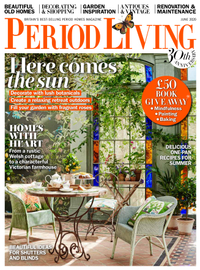
There is every reason why the Cotswolds in Gloucestershire have been designated an ‘Area of Outstanding Natural Beauty’. Rolling hills, charming market towns and chocolate-box cottages form the quintessential classic English rural scene. Away from the hub of busy tourist spots, sleepy honeyed stone villages are tucked into pockets of countryside where gentle streams meander beside the narrow lanes. Chedworth, near Cirencester, is one such village.
Bee Eastman made the village her home in 2011. On moving to her cottage, former forensic consultant Bee expanded her gardening pastime into a full-time passion, which she enjoys alongside her new-found hobby of stone carving and etching.
Read on to find out how Bee transformed the plot into the perfection of a cottage garden. Visit our gardens ideas page for more advice and inspiration, and find inspiration in our cottage garden ideas guide.
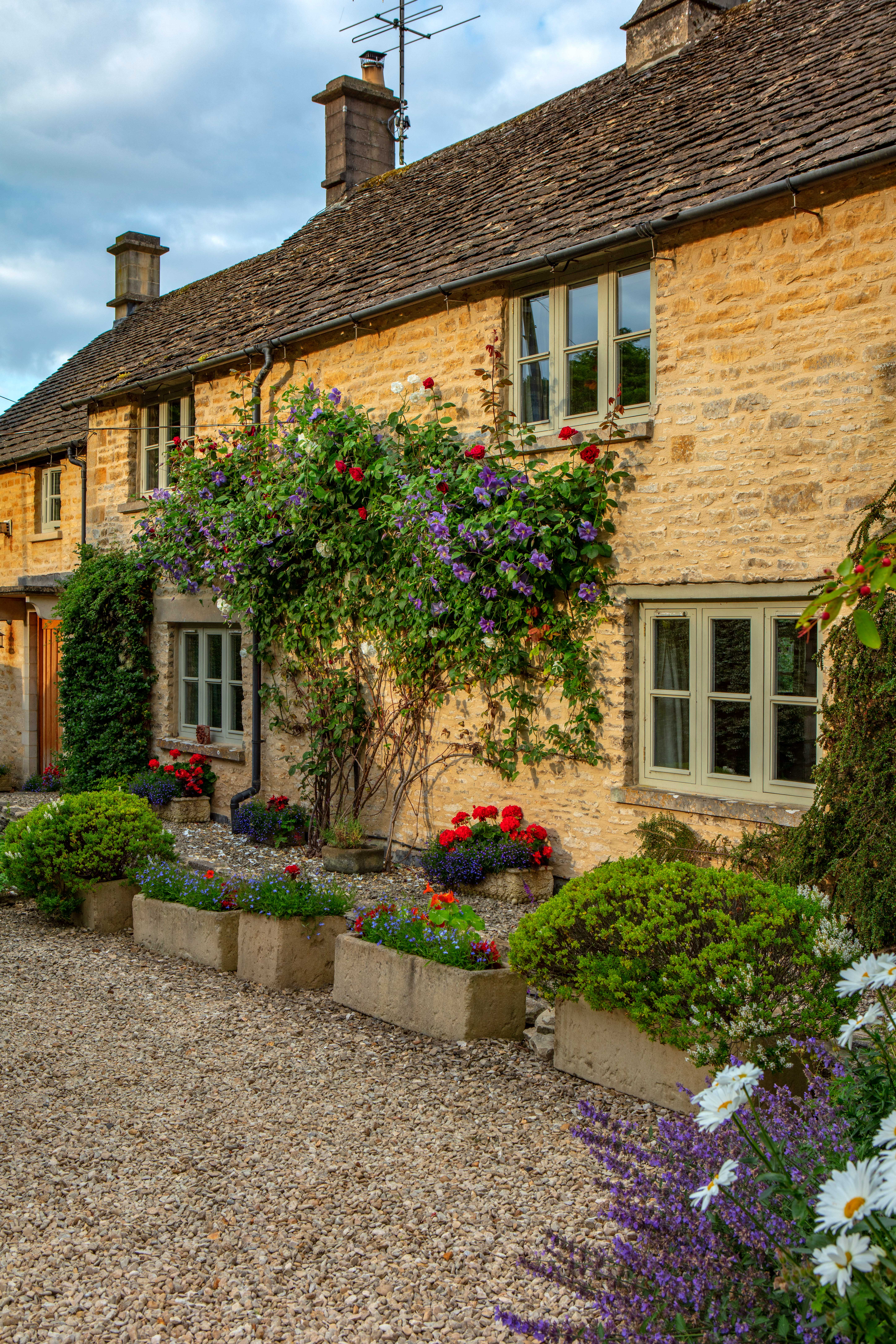
Roses and clematis scramble up the honey-coloured stone walls of the cottage and a wooden bench provides the perfect spot to sit and admire the scene
‘Since retiring, I decided to explore my creative side by enrolling at the Putney School of Art and Design,’ Bee explains, who then went on to study stone carving at the New Brewery Arts Centre in Cirencester. Her prints and sculptures have been exhibited and sold locally and in London, and her artistic talent is clearly seen in the layout of her garden, too, which she designed from scratch.
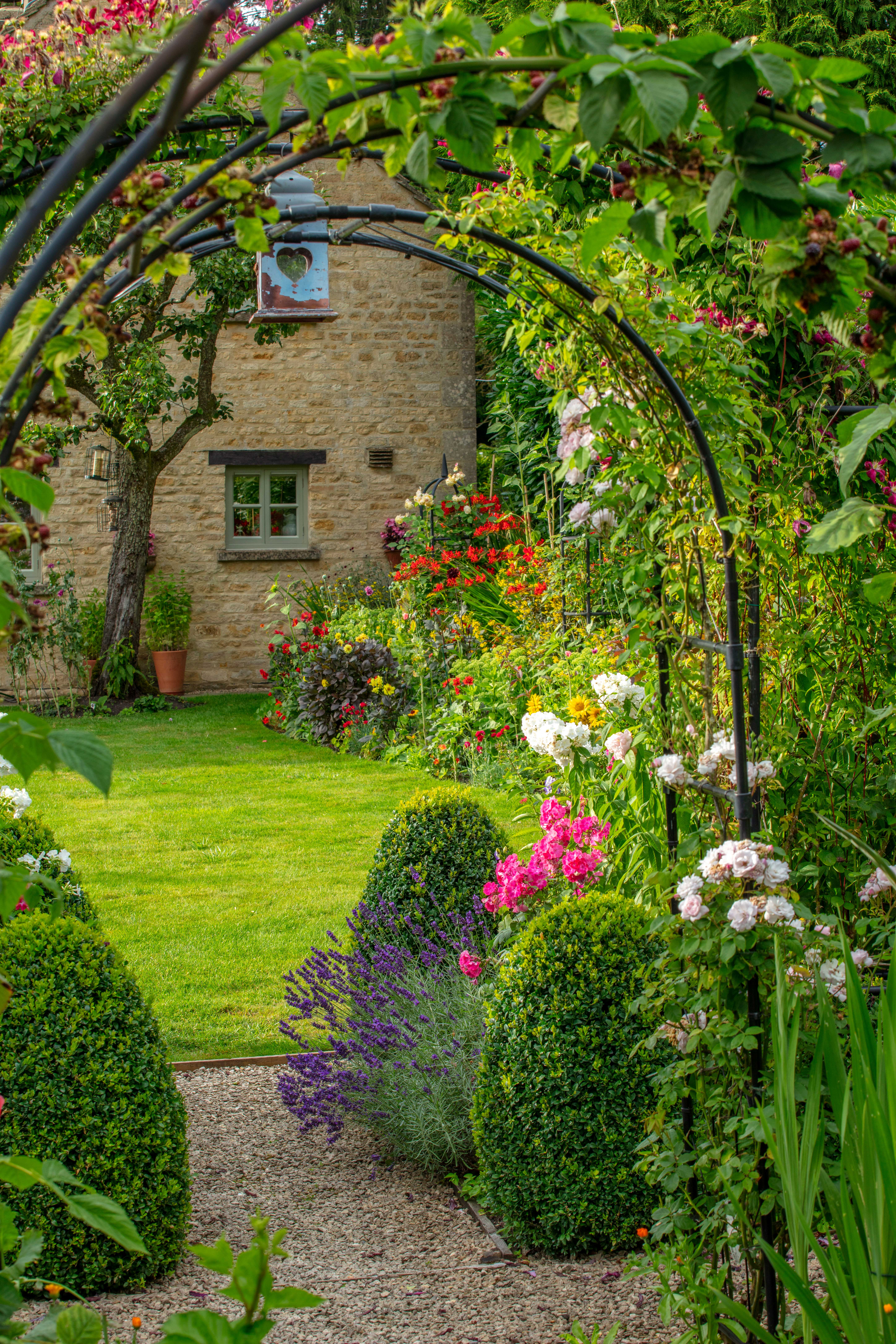
Dating back to the 18th century, Adam’s Pool was originally two homes. When Bee and husband Nigel first moved here nine years ago, the garden was well loved, but in a different form; Bee’s vision was to create a series of garden rooms with plenty of space for relaxing.
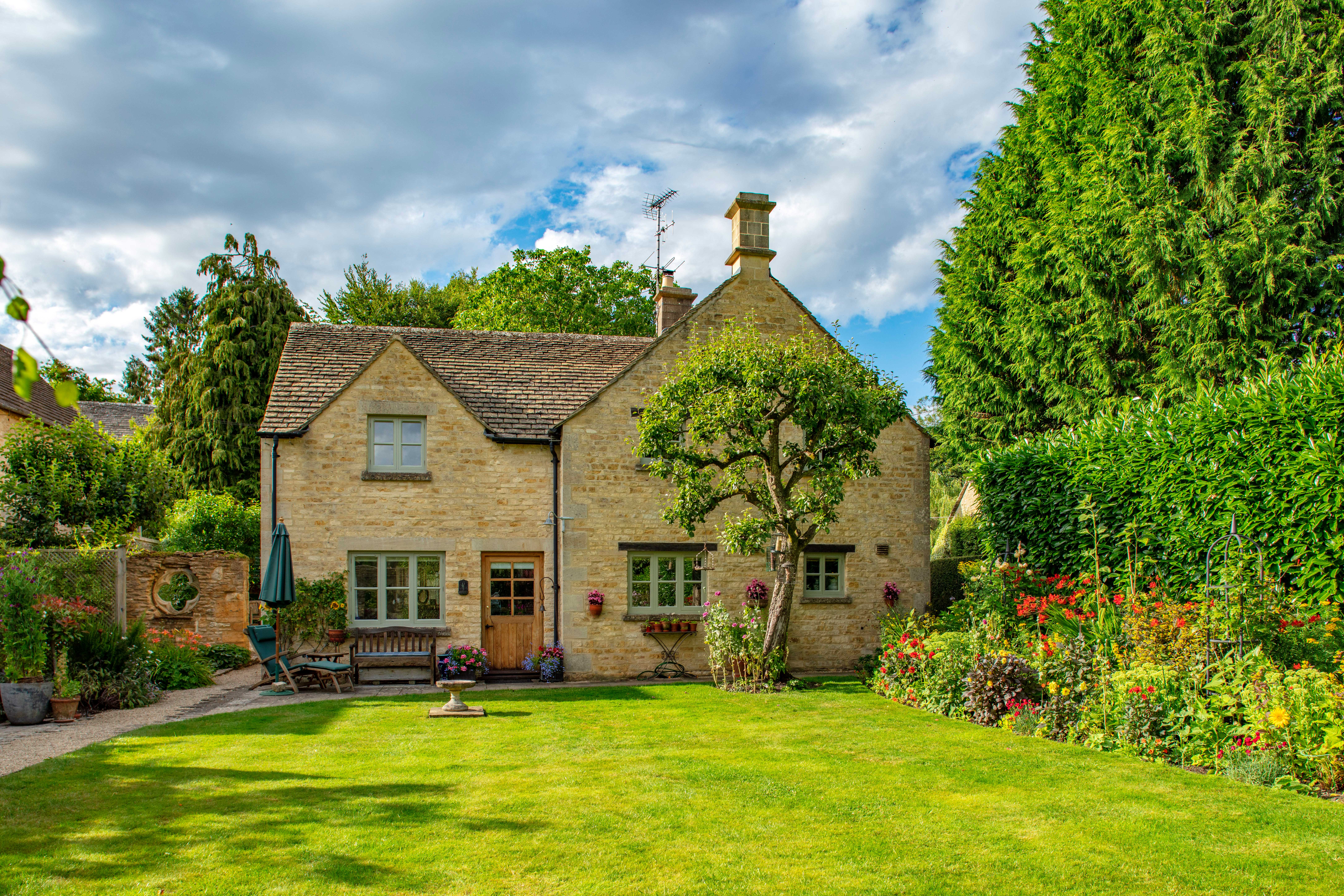
‘The first alteration to the garden was to construct a courtyard abutting the older part of the house by building a folly wall with a quatrefoil recycled church window,’ she explains. The wall incorporates ledges to hold candles, and the topiary-studded courtyard is a perfect sun-trap, with lavender spilling across the gravel, Verbena bonariensis and Nigella damascena, love-in-a-mist providing low-growing colour, while pale pink roses and Clematis ‘Perle d’Azur’ spill from the walls of the house and folly wall.
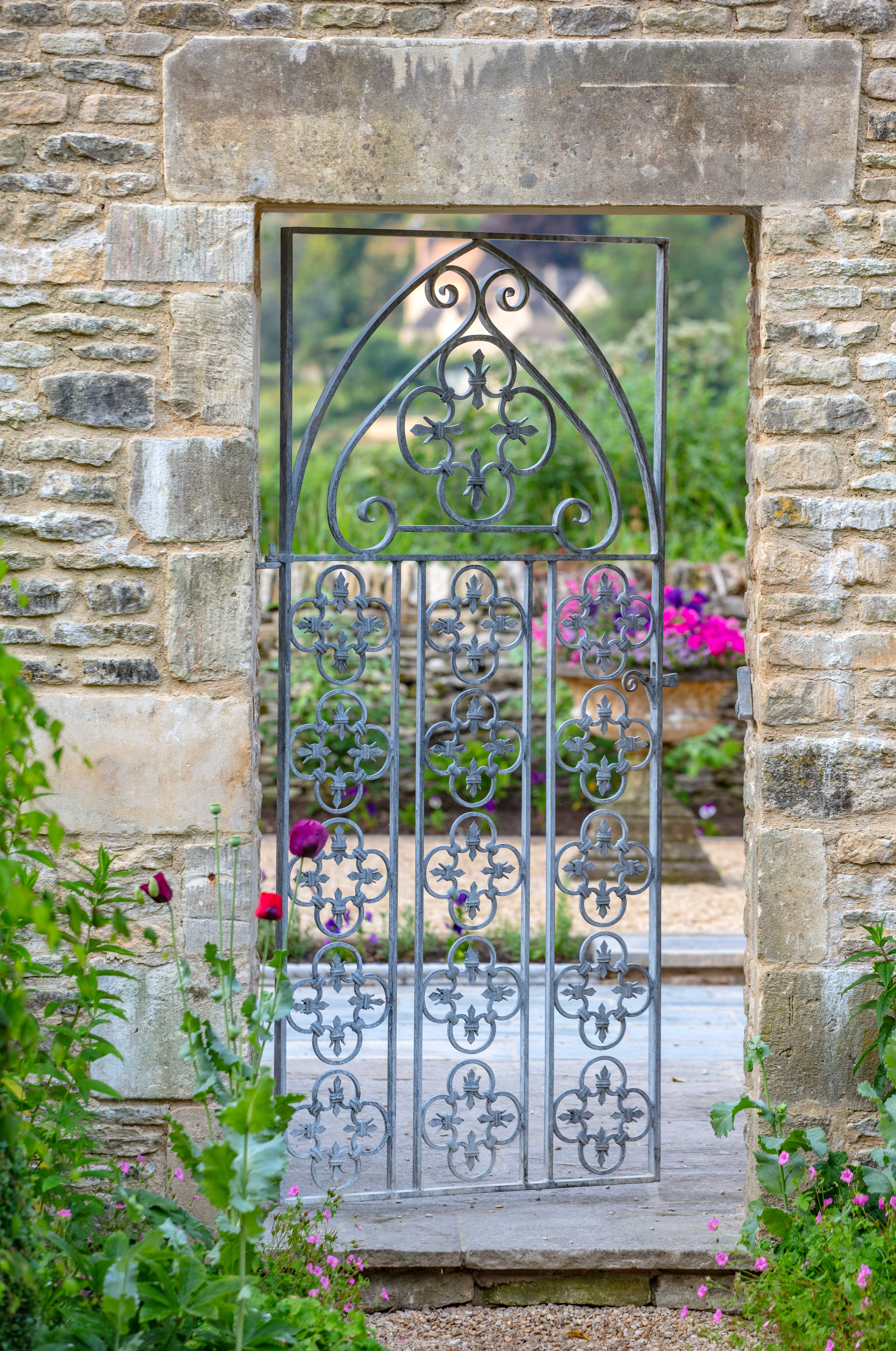
The gate that Bee designed to mirror the quatrefoil church window in the folly wall, and which was made at the local Donkeywell Forge
In the rear garden, a rectangular lawn is surrounded on two sides by abundantly planted borders, one in ‘hot’ colours and the other planted in soft pinks and blues. In the hot border, chocolatey red Dahlia ‘Karma Choc’ and ‘Bishop of Llandaff’ are dotted among towering sunflowers, while spires of bright yellow Lysimachia Punctata, loosestrife, and fiery orange crocosmia jostle for space among cheerful yellow Rudbeckia fulgida var.sullivantii ‘Goldsturm’ and Sedum spectabile. Further height is provided by the apricot-yellow-coloured flowers of the ‘Teasing Georgia’ rose scrambling up obelisk supports. ‘The sunflowers are planted from seed, although they need support as they grow,’ explains Bee.
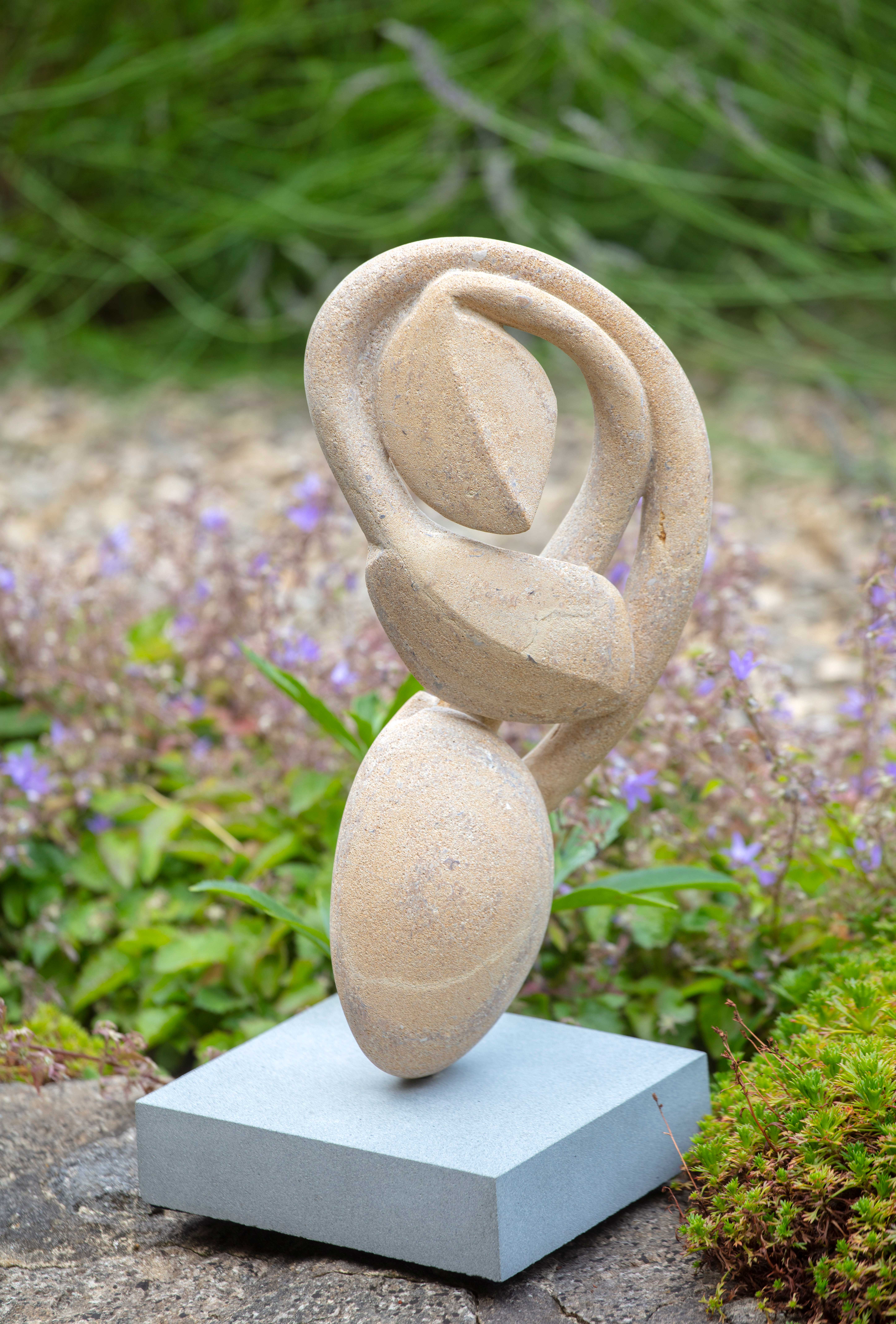
This seed stone sculpture is one of Bee’s own pieces, which she sells locally and in London
In contrast, the cool border is bursting with more cottage garden favourites, such as phlox in shades of white, pink and soft purple. Box topiary domes nestle among the planting and the claret-coloured Clematis ‘Madame Julia Correvon’ smothers the trellissed backdrop and scrambles across the central archway leading to the potager. Scented white ‘Blush Noisette’ rose, lavender and fairy bellflower are some of Bee’s favourite pastel-coloured plants in this border. ‘The pale pink and lilac colours are so restful, and I especially love the wonderful scent of the rose,’ she says.
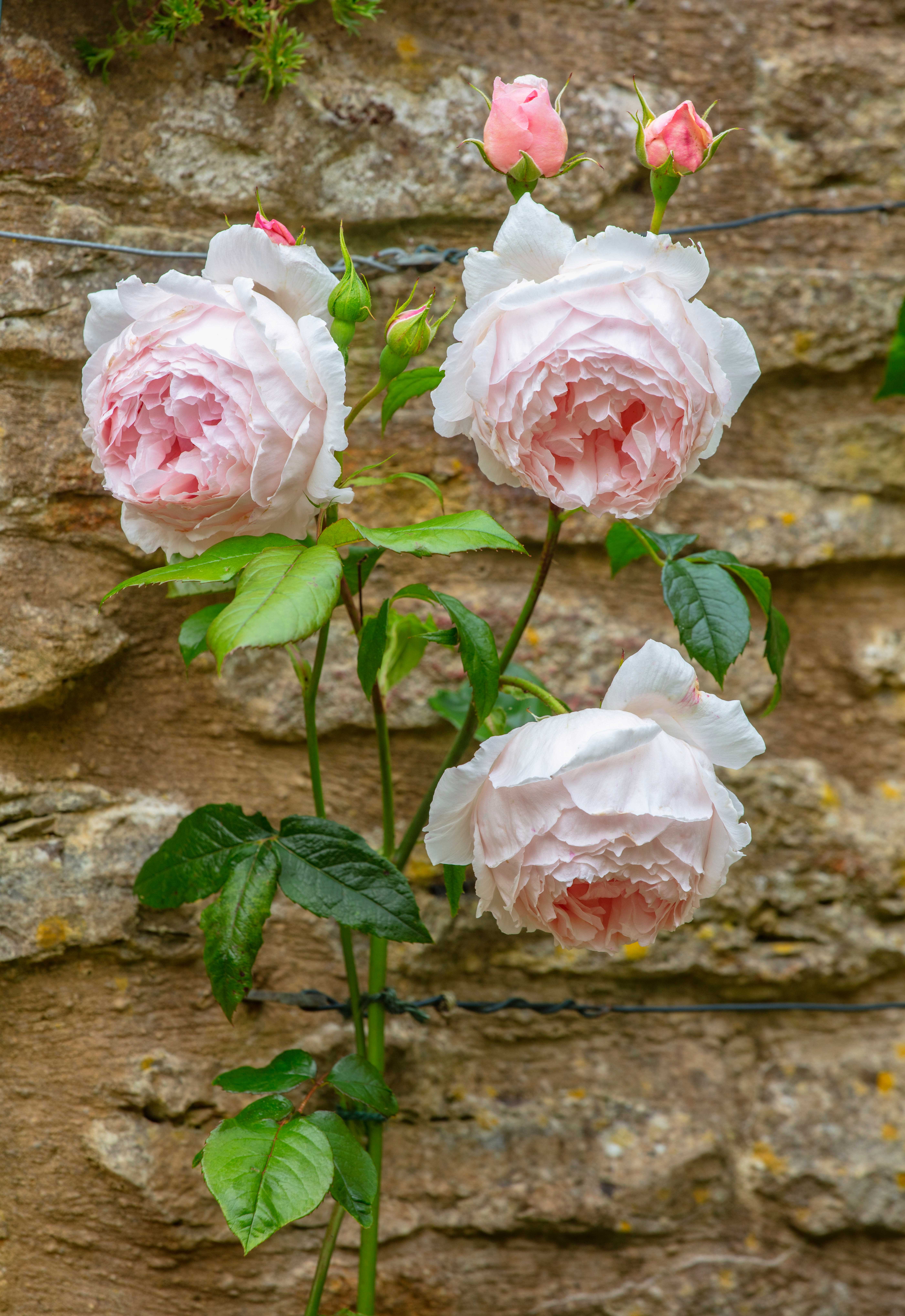
The romantic, timeless blooms of pale pink roses
Nigel and Bee enjoy entertaining and the garden provides the perfect backdrop in which to spend long summer evenings with family and friends. An outdoor dining area to the west side of the garden makes the most of the evening sun, where sweet peas in pots are placed in order to enjoy their fragrance.

The wooden arbour, near to potted sweet peas and fragrant roses, and tucked away in a corner, is a comfortable vantage point from which to enjoy the garden
A wooden arbour furnished with comfy cushions in the corner of the garden, is the perfect spot from which to relax and enjoy morning coffee while admiring the garden, ‘although next door’s cat is rather fond of sitting there, too,’ muses Bee.
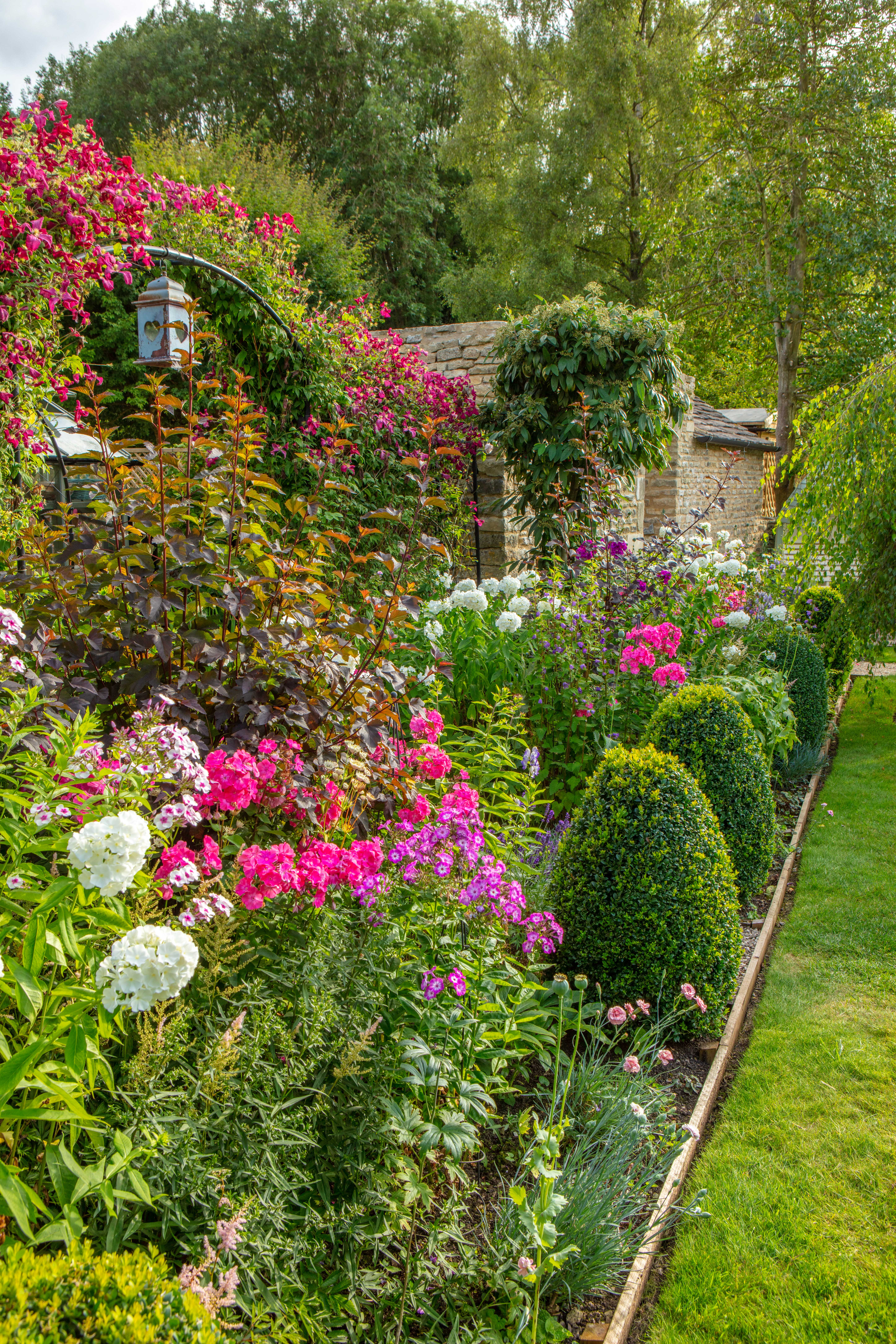
‘Our most recent project was to create the Secret Garden on a plot bought from our neighbours,’ she continues. The space had previously been a children’s play area and was covered with weed-suppressant matting and rubber chips. ‘With the help of gardener Pete Heaps, we filled three skips with debris to create beds before we could even begin to think about planting and rebuilding the old privy into a tiny potting shed’.
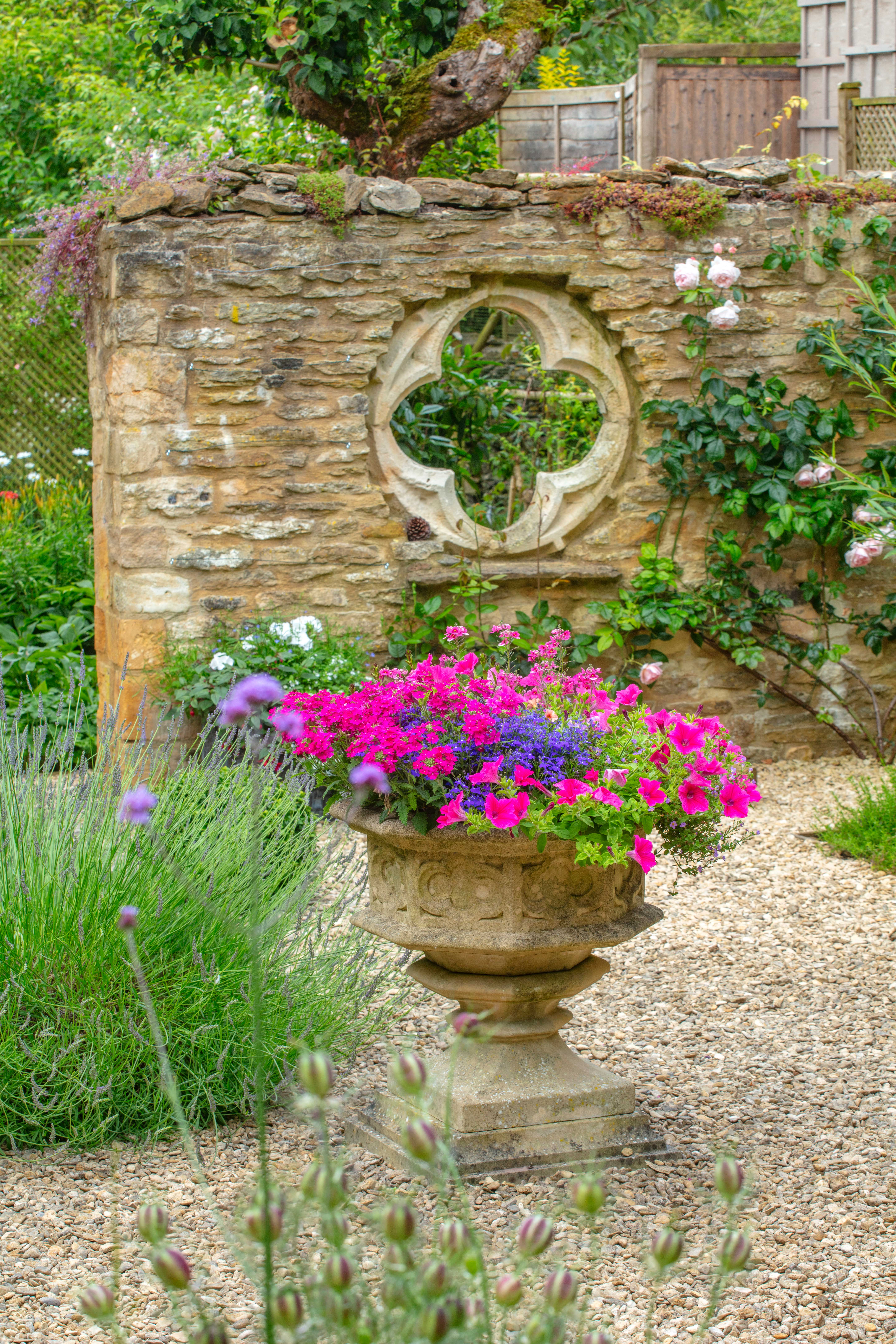
A folly wall, inset with a quatrefoil, recycled church window and up which pale pink roses clamber, creates a peaceful courtyard garden area
The result is a pleasing gravelled quadrangle approached through a gothic-style galvanised iron gate in a rebuilt stone wall. The gate was designed by Bee and made by Jon Ward at the Donkeywell Forge, Cirencester. The design is based on the quatrefoil in the courtyard garden. ‘I am indebted to the local stonemasons, Trevor Rowlands and Ken Stevens, who rebuilt the wall using stone from the Farmington quarry, and to the craftsmen at the forge; I have great admiration for their skills,’ says Bee.
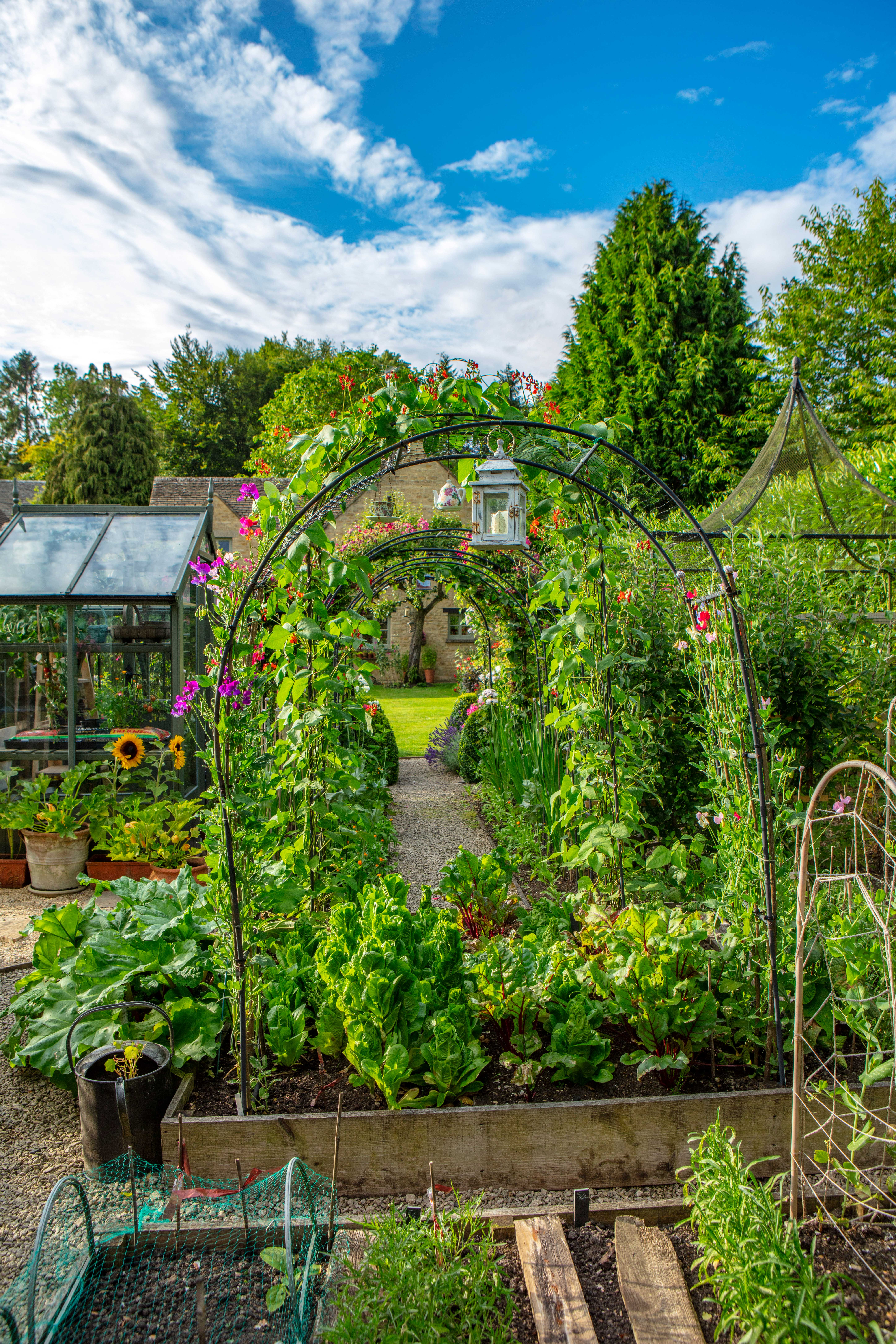
Mixed crops of fruit and vegetables, which Bee’s grandchildren helped to sow, fill the raised beds of the potager. They are accompanied by sunflowers in pots beside the greenhouse, while clematis and sweet peas climb up the archways
The local blacksmith also made the archway through to the potager, in which Bee grows fruit and vegetables alongside flowers for cutting. ‘Our grandchildren help to sow and harvest the flowers and vegetables; sunflowers and potatoes are their favourites,’ Bee says, fondly.
A tiny greenhouse bursting with tomatoes is useful for bringing on seedlings before planting out. Bamboo canes topped with empty snail shells are not just there to support plants. ‘The snail shells are quite sculptural and they stop you poking your eye out when you’re gardening!’ laughs Bee.
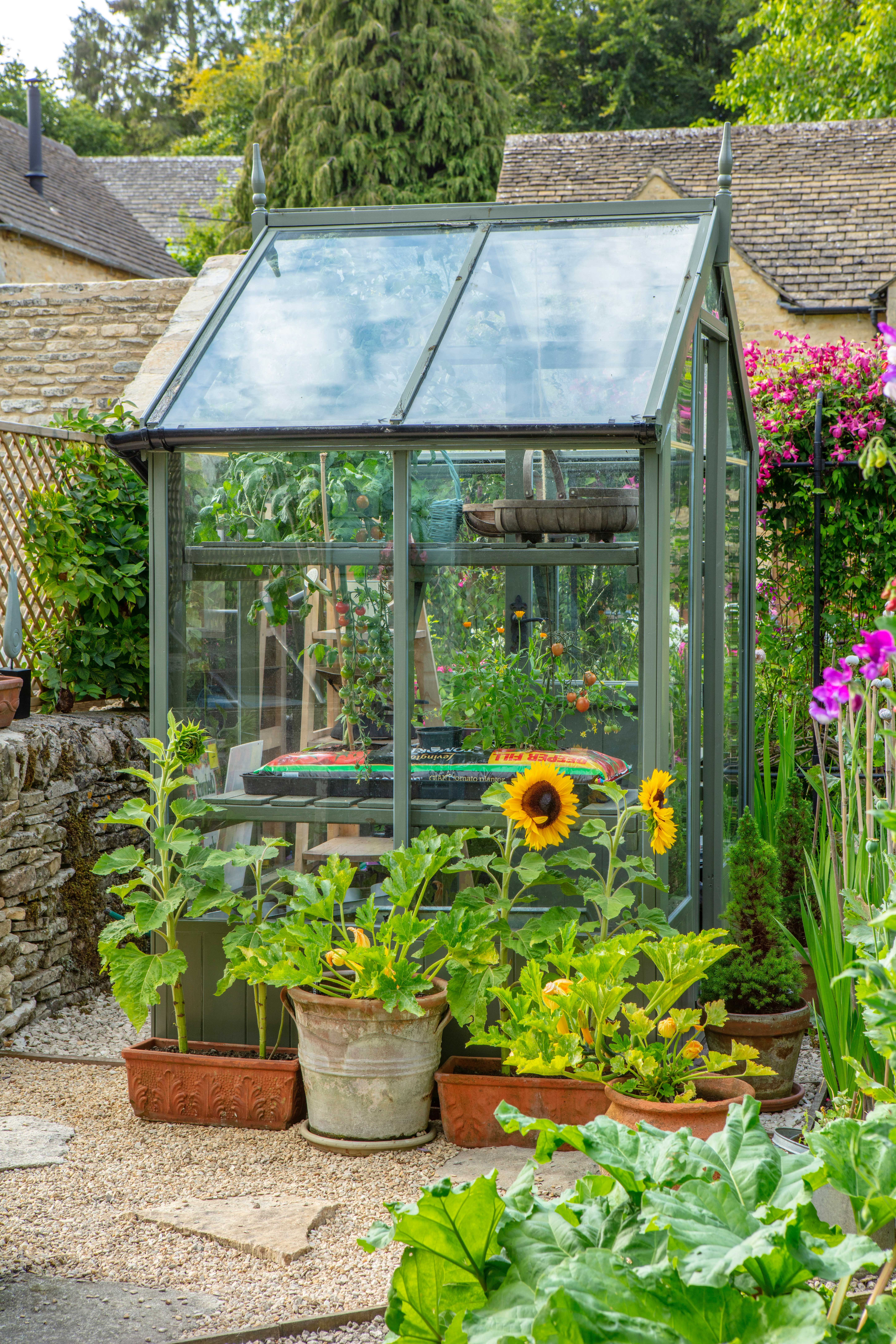
The front of the house was formerly an unloved driveway but has now been transformed into a welcoming entrance, giving the visitor a flavour of the delights that lie behind the house. Imposing Acanthus spinosus, spiny bear’s breech, are planted at the gate beside the daisy-like Leucanthemum x superbum. Purple Clematis ‘Perle d’Azur’ clambers through red and white roses across the front of the cottage, beside which a narrow rill trickles gently by. ‘Although it does require dredging once a year to keep it flowing,’ confesses Bee.
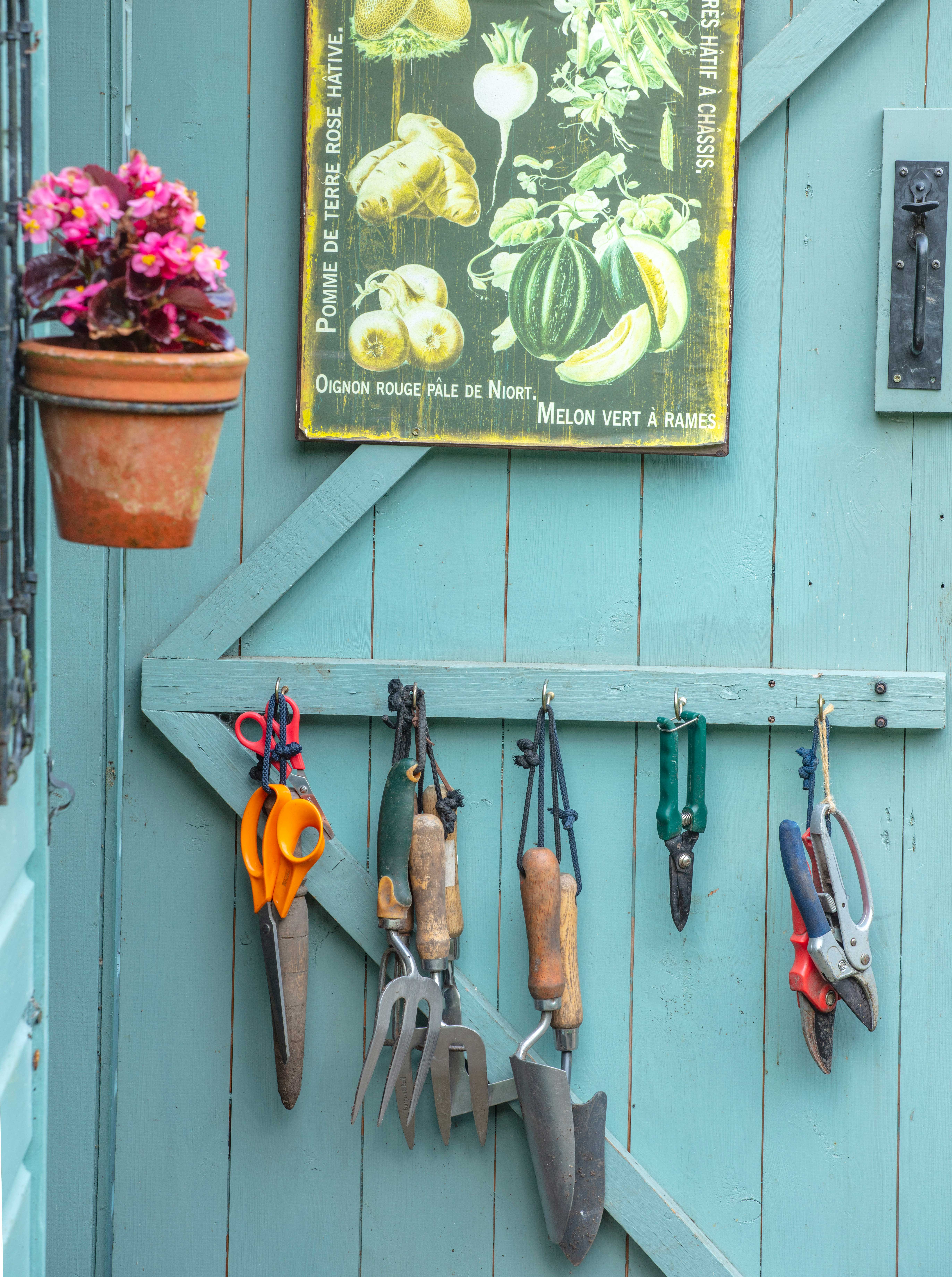
With a borrowed view of the Cotswold hills beyond, Bee and Nigel’s garden is the perfect retreat from the modern world. ‘We have lived in several places, from the New Forest to London, but this is definitely our favourite’.
Subscribe to Period Living for more inspiration
Period Living is the Uk's best-selling period homes magazine. A subscription provides you with all you need to know about caring for and improving a traditional house and garden.
More gardening advice:
- 9 wonderful English country gardens
- An award winning cottage garden
- Organic gardening: how to create a successful organic garden
Join our newsletter
Get small space home decor ideas, celeb inspiration, DIY tips and more, straight to your inbox!
-
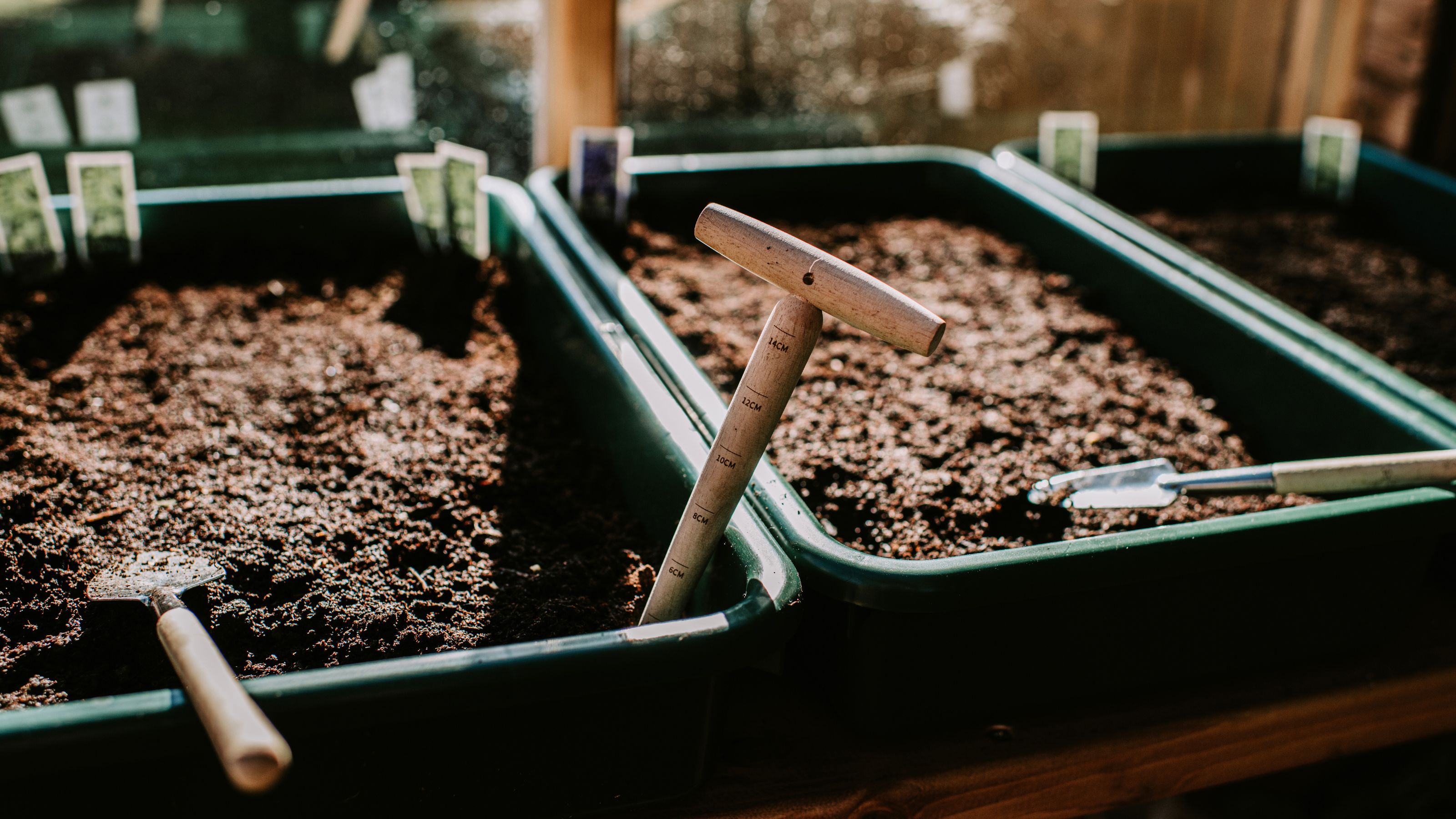 How to make compost — 8 easy steps gardening pros always use
How to make compost — 8 easy steps gardening pros always useLearn how to make compost at home in seven easy steps, whether you have a bin or want to create a compost heap. We've asked pros for their top tips
By Eve Smallman
-
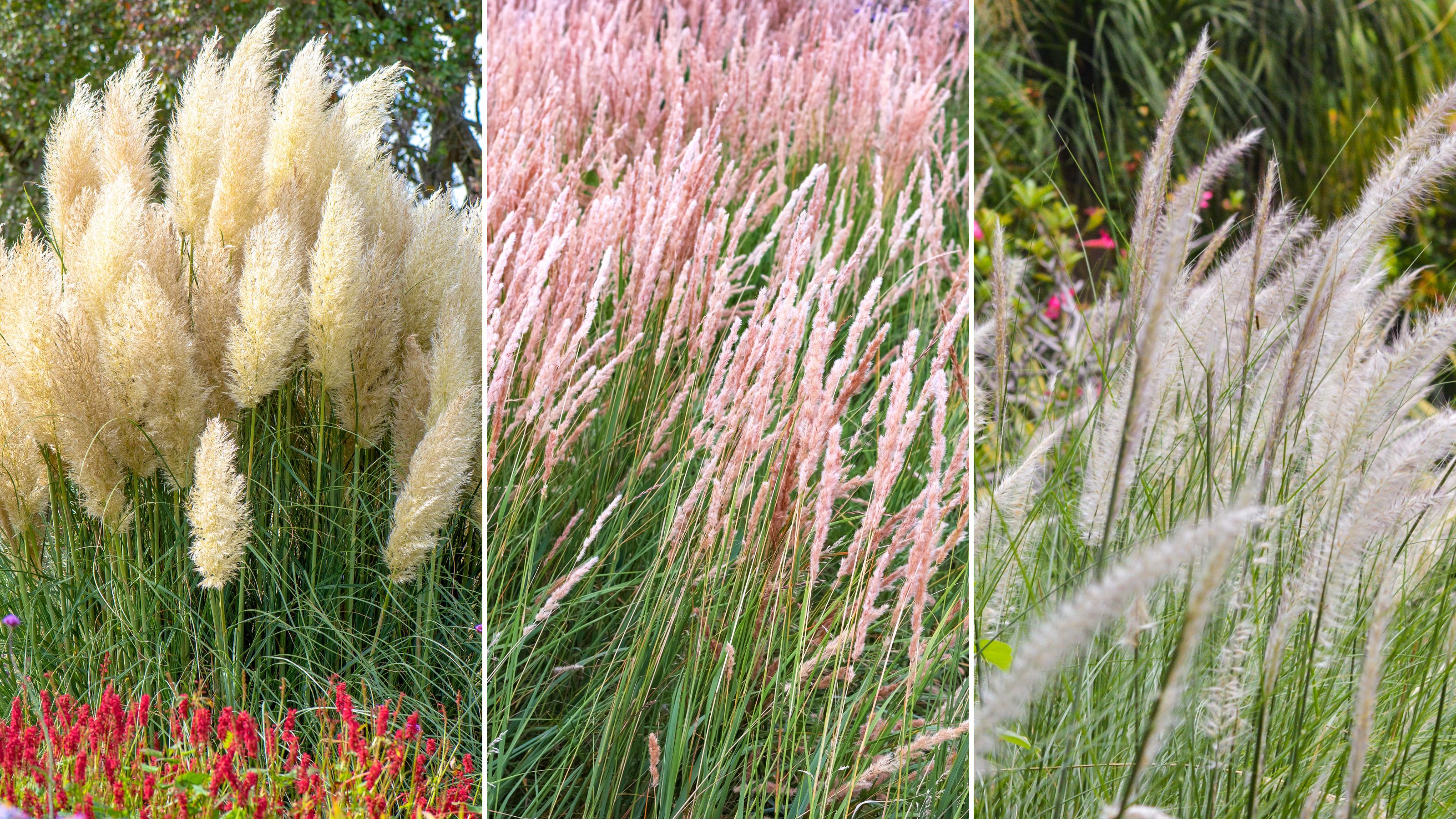 Planting ornamental grasses — the best types experts love and how to grow them
Planting ornamental grasses — the best types experts love and how to grow themWe've got you covered on planting ornamental grasses, speaking to experts about what ones to grow, how to grow them, and factors to consider
By Eve Smallman
-
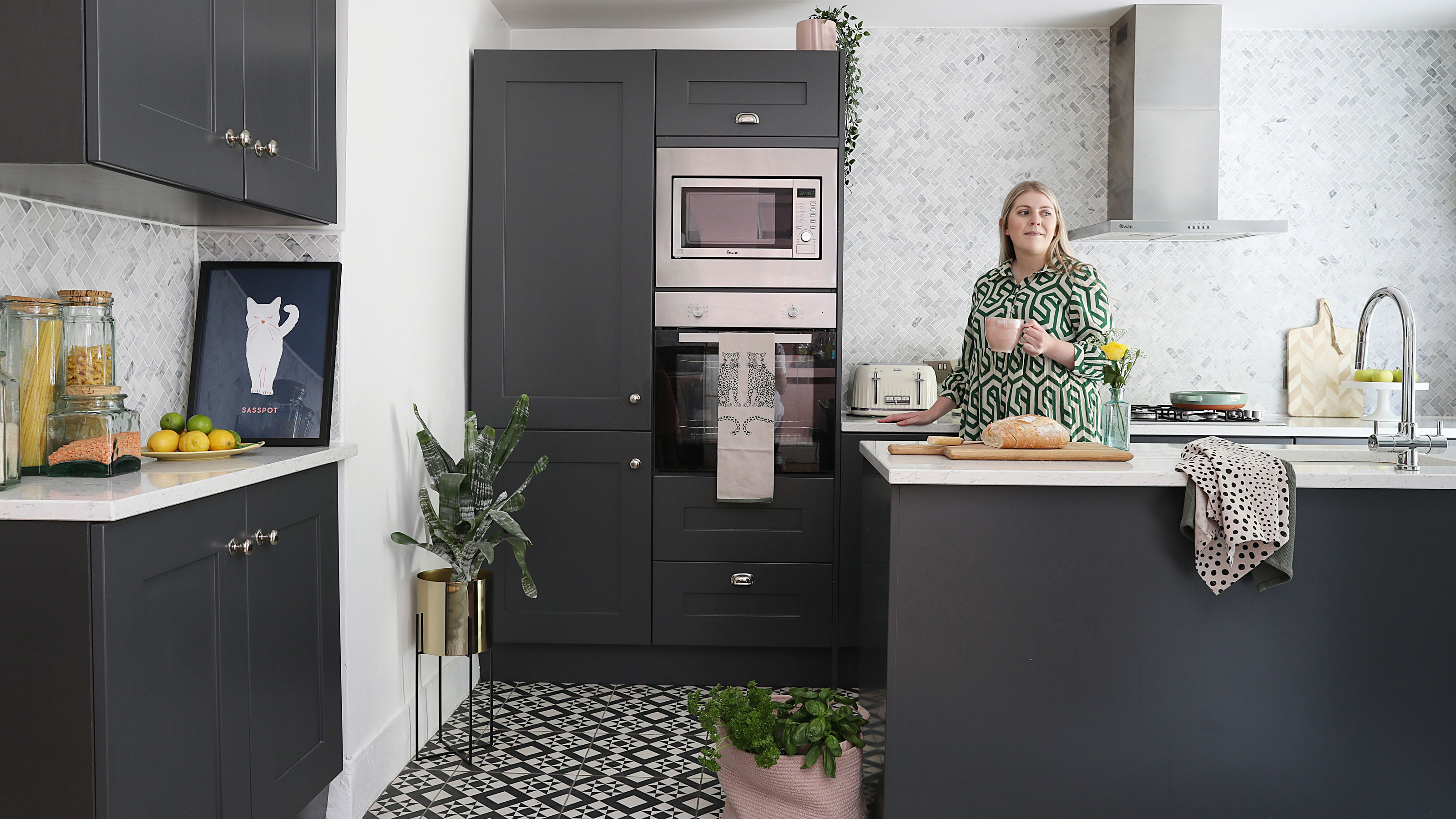 "Grotty" terrace is transformed with French flair and Ibiza vibes in the garden
"Grotty" terrace is transformed with French flair and Ibiza vibes in the gardenEsther Pillans' tired-looking Victorian terraced house was given a makeover with a touch of Parisian chic
By Ellen Finch
-
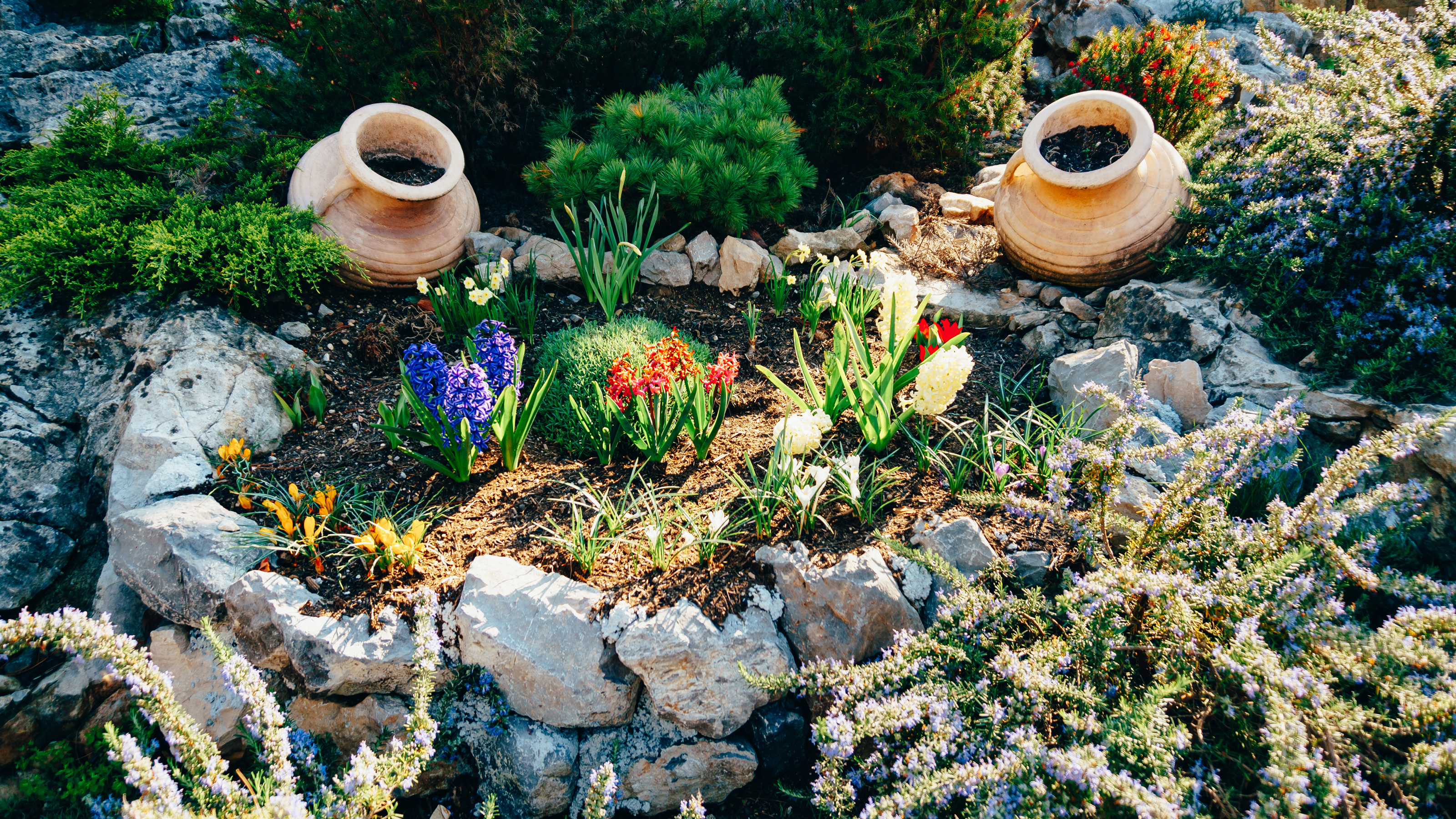 Rock garden ideas – 10 DIY ways to create a rockery
Rock garden ideas – 10 DIY ways to create a rockeryThese rock garden ideas are suitable for outdoor spaces big and small. Create your own rockery on a lawn or even on a balcony with just a few materials.
By Anna Cottrell
-
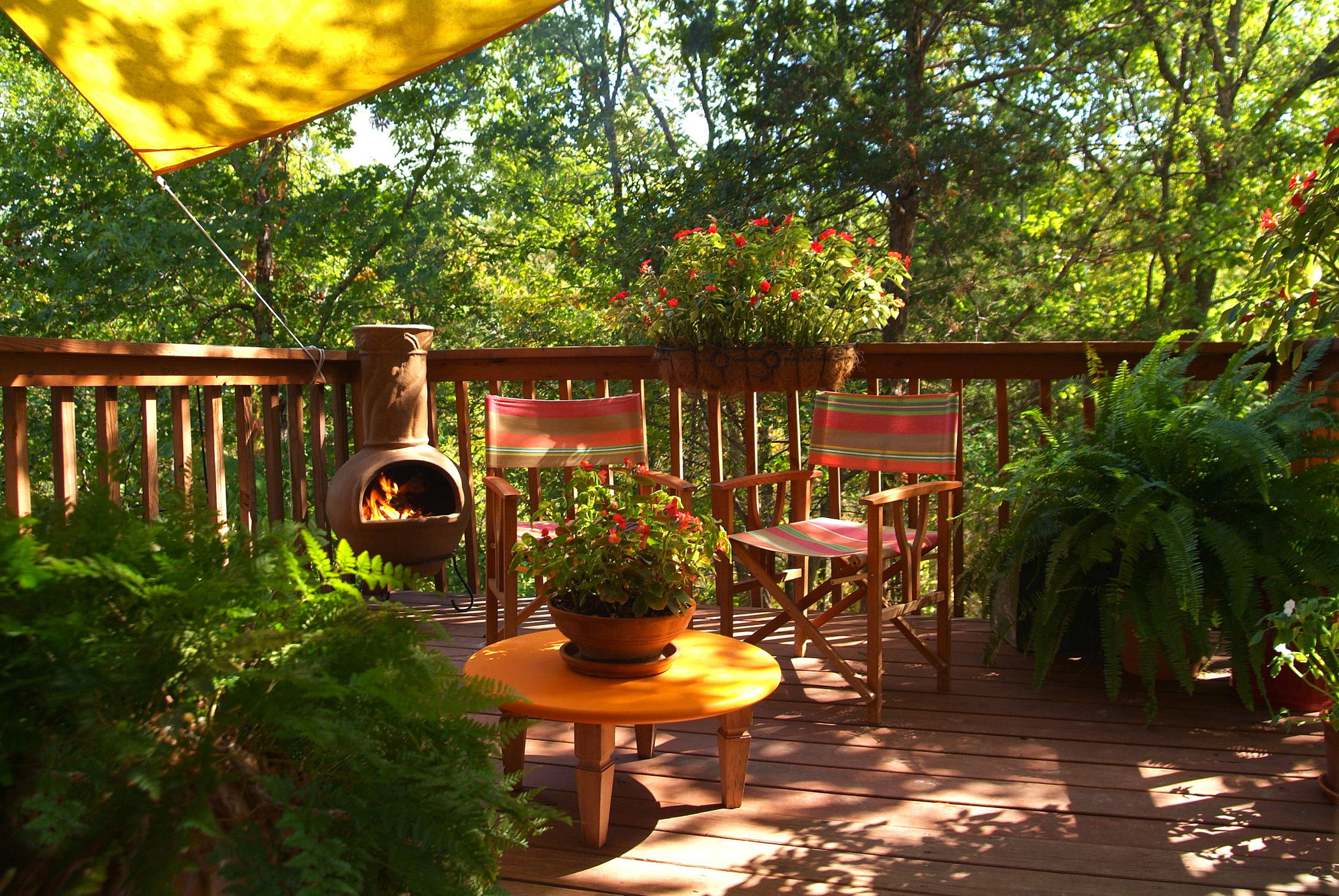 Cabin fever? These chimineas will extend the life of your patio
Cabin fever? These chimineas will extend the life of your patioThis cold-weather season, cozy up to our favorite chimineas!
By Brittany Romano
-
 5 outdoor summer essentials to prove Society6 is your one-stop-shop this season
5 outdoor summer essentials to prove Society6 is your one-stop-shop this seasonCheck off all of your outdoor summer essentials by shopping exclusively at Society6.
By Brittany Romano
-
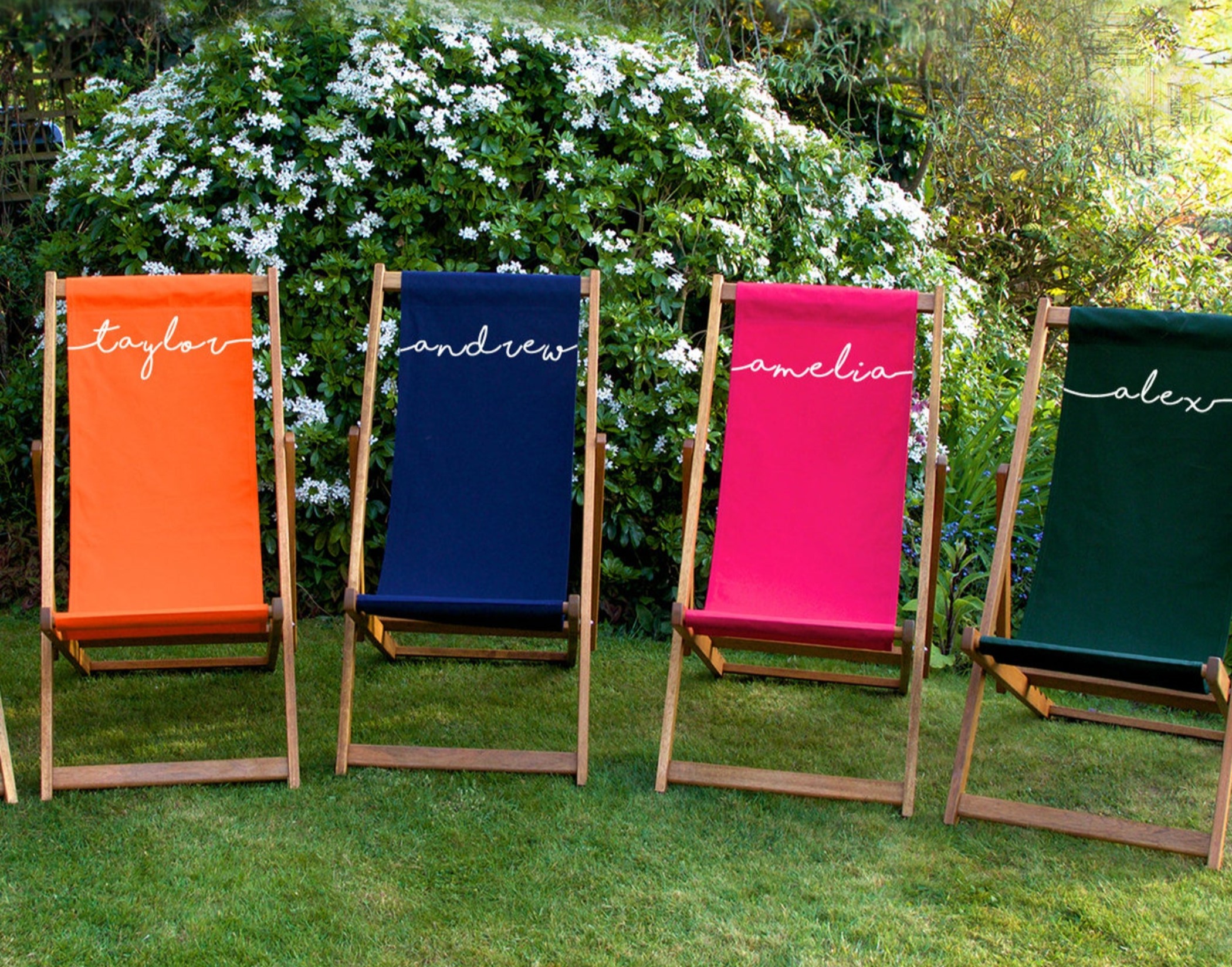 The first-ever Etsy outdoor sale is happening now, and we're buying these 5 items
The first-ever Etsy outdoor sale is happening now, and we're buying these 5 itemsFor a limited time, this Etsy outdoor sale will give your backyard the facelift it needs — at a fraction of the cost.
By Brittany Romano
-
 The benefits of houseplants – 8 feel-good ways plants help your health
The benefits of houseplants – 8 feel-good ways plants help your healthEnjoy the many benefits of houseplants. Air-purifying, anxiety-soothing, mood boosting and more positive vibes.
By Camille Dubuis-Welch
